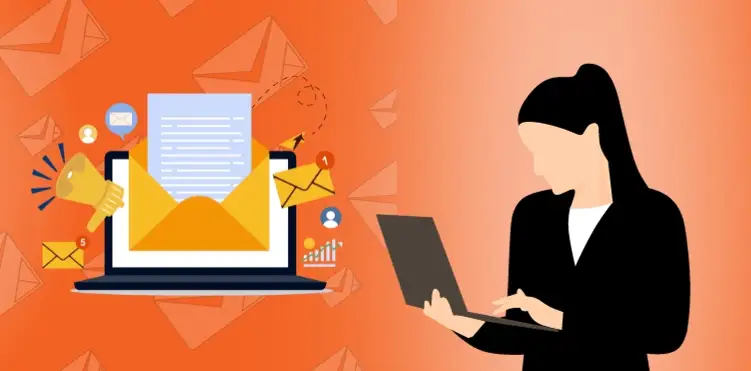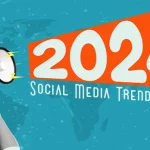Written by Saheen Rahman
Navigating Inbound Strategy with Email Marketing
Hi readers! Have you ever wondered how your favourite brands manage to land in your inbox with those catchy emails? Have you ever received an email that made you go, “Wow, how did they know I needed this?” These are not just random messages; they are a crucial part of a marketing strategy known as “inbound marketing.”
Today, we’re diving into the magical world of inbound strategy and its superhero partner, email marketing. But don’t worry if these terms sound like jargon; we’re breaking it down in the simplest way possible – in a language that is as simple as ABC.
What is Inbound Strategy?
Imagine you are casually scrolling through your social media feed or browsing the web, and suddenly, you stumble upon a blog post or video that answers a question you have had for ages. That’s inbound strategy in action! It’s about creating valuable content that attracts people naturally.
Inbound Strategy involves:
- Content Creation:
Crafting engaging blogs, videos, social media posts, etc., that resonate with your audience.
- SEO (Search Engine Optimization):
Optimising content to be easily found on search engines like Google.
- Social Media Engagement:
Interacting and sharing content on platforms where your audience hangs out.
- Building Relationships:
Fostering connections by providing value and addressing needs.
Enter Email Marketing in the Inbound Arena
Now, let’s introduce the star player in our story: Email Marketing. Think of it as a friendly messenger that helps businesses connect with their audience directly through emails.
- Personalised Communication
Imagine receiving an email that feels like it was crafted just for you—this is the magic of personalised communication in email marketing strategy. Businesses use data about your preferences, past interactions, and behaviour to tailor their messages. For instance: Let’s consider that you often shop for running shoes on an online store. The store might send you personalised emails with recommendations for the latest running shoe models or accessories based on your previous purchases. This personalised approach makes you feel understood and appreciated as a customer.
- Nurturing Relationships
The email marketing strategy is about building trust and loyalty by delivering valuable and timely content. By consistently providing content that is relevant and helpful to subscribers, businesses nurture relationships with their audience.
For example: Consider a subscription-based cooking website. They might send weekly newsletters containing new recipes, cooking tips, and exclusive how-to videos. Over time, as you explore and benefit from this content, you start trusting their expertise. This builds a sense of loyalty, making you more inclined to engage with them.
- Driving Engagement
More than just being about delivering information; emails are an effective way to encourage action through compelling calls-to-action (CTAs). CTAs prompt recipients to take the next step, whether it’s making a purchase, signing up for an event, or downloading a guide. Let’s look at a travel agency that might send an email featuring a stunning destination and a CTA prompting you to “Book Now for Exclusive Deals!” The CTA stands out, compelling you to click and explore the exciting offers, driving engagement with the agency’s services.
How Email Marketing Powers Inbound Strategy
- Creating Valuable Content:
- Diversified Content:
Emails can contain diverse content types, such as blog posts, guides, infographics, or exclusive content relevant to the audience’s interests.
- Educational Value:
Businesses can use emails to provide educational resources, industry insights, or how-to guides that genuinely help subscribers.
- Engaging Communication:
Crafting emails with engaging and informative content ensures that recipients find value in what they receive, fostering a positive perception of the brand.
- Building a Community:
- Exclusive Updates:
Subscribers receive exclusive updates, insider information, special offers, or early access to products/services, making them feel valued.
- Two-way Communication:
Brands can encourage interaction by inviting feedback, conducting surveys, or featuring user-generated content, making subscribers feel like active participants.
- Consistent Engagement:
Regular emails help maintain a connection, encouraging a community feel and reinforcing brand loyalty.
- Nurturing Leads:
- Personalised Follow-ups:
Sending follow-up emails based on user actions, like abandoned carts or incomplete sign-ups, gently nudges them to take the next step.
- Educational Drip Campaigns:
A series of emails offering valuable information gradually guide leads towards making informed purchasing decisions.
- Building Trust:
By consistently providing helpful content, businesses establish credibility and trust with potential customers.
- Driving Traffic to a Site:
- Targeted Redirects:
Links in emails direct subscribers to specific pages related to the email content, increasing the chances of conversions.
- SEO Boost:
Increased traffic from email clicks signals to search engines that the website’s content is relevant, positively impacting SEO rankings.
- Analysing Traffic Sources:
Tracking email-driven traffic helps businesses understand the effectiveness of their email campaigns and optimise strategies.
The Bottom Line
It’s all about delivering value, building relationships, and engaging your audience in a way that’s personal and effective. So, next time you receive an intriguing email from your favourite brand, know that it’s not just a message but a strategic move to enhance your experience with them. Time to supercharge your inbound strategy with the power of email marketing!
By incorporating email marketing into an inbound strategy, you’ll witness –
A boost in engagement
Deeper connections with the audience
Better results for your business.
Understand the audience’s needs, deliver valuable content, and foster lasting relationships. Remember, the world of marketing is ever-evolving, so stay curious, experiment, and keep delighting the audience with fantastic content!
Happy emailing!
FAQs
Q: Is email marketing still effective in the era of social media?
A: Absolutely! While social media is great for engagement, email marketing provides a more personalised and direct approach to connect with your audience.
Q: How often should I send emails to my subscribers?
A: It depends on your audience and the value you’re providing. Consistency is key, but avoid overwhelming your subscribers with too many emails.
Q: Can I automate my email marketing efforts?
A: Yes! Automation tools allow you to schedule emails based on triggers like subscriber actions or specific dates, saving time and ensuring timely delivery.

 Maximising Real Estate with Digital Marketing Strategies
Maximising Real Estate with Digital Marketing Strategies Cracking the Code: How Social Media Algorithms Shape Your Reach
Cracking the Code: How Social Media Algorithms Shape Your Reach UNVEILING THE SOCIAL MEDIA TRENDS IN INDIA: 2024
UNVEILING THE SOCIAL MEDIA TRENDS IN INDIA: 2024 When The World Of AI Meets Graphic Design
When The World Of AI Meets Graphic Design